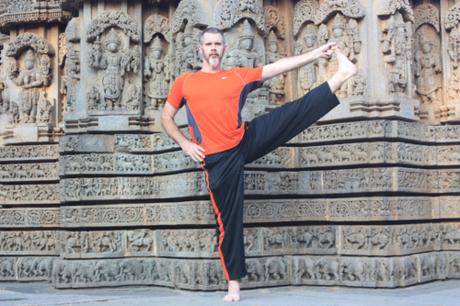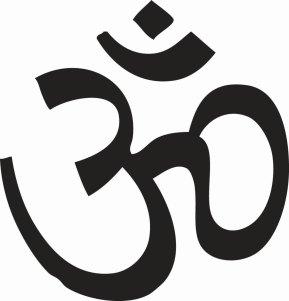
Chennakesava Temple, Somanathapura
To what degree can yoga practice be whatever one needs it to be?
If one is expecting the definitive answer to this question, one won’t find it here. While I’ll share my views, I’d love to get some comments, because shared wisdom may help myself and others to hone in on a more coherent answer.
There is a continuum of views on this question. On one hand, there are people who have very rigid notions of what a yoga practice can (or should) consist of. “Everyday, one should do precisely x repetitions of Surya Namaskara (Sun Salutations), y repetitions of nadi shodhana (alternate nostril breathing), z repetitions …, and every full moon one should do…, and every six months one should do… shatkarma, etc.” In some circles, this rigidity may extend to what deity one worships, the nature of one’s personal philosophy, what one should eat, how one should dress, and how vigorous one’s practice should or shouldn’t be.
Near the rigid end of the spectrum are those who rail against drawing secular and / or culturally-neutral elements from yoga, and / or engaging in a revision of yogic culture. [Cultural revision, in this case, referring to a shift from the traditional culture which is Indo-centric to a more Westernized approach (e.g. this may be seen in different modes of teaching and / or in interaction between students and teachers.) I’m afraid this may remain unclear to anyone who hasn’t spent time in both: a. a traditional yoga ashram / shala; and b. a Western-style yoga studio. To those who have, it’s likely apparent that these two places each have a culture that may share elements (especially superficial one’s like symbology, etc.), but which aren’t identical.] The recent controversy generated by a paper by a Michigan State University professor, Shreena Gandhi, who suggested that Americans practicing yoga were engaging in a kind of white supremacy is a case in point.
I find myself rejecting the aforementioned extreme for a number of reasons. First, if yoga practice should be one thing, how come there are so many different “one things” that it should be? If one set was objectively superior, one would expect it to come to dominate, but we don’t see that. Secondly, it fails to acknowledge the wide variety of varied needs. There can even be logical inconsistencies embedded in these rigidities. For example, if one says that a practitioner should do 15 rounds of Surya Namaskara per day, and, also, that they shouldn’t increase the rapidity of breathing by much, then one is limiting the base of students. Some students simply can’t do 15 rounds in a session, while for others it’s an inadequate warm-up because it doesn’t tax their system in the slightest. Thirdly, while I’m not a Sanskrit scholar, from what I’ve been taught, the early writings don’t suggest the kind of doctrinaire approaches to yoga one sees today. One can see in Patanjali’s Yoga Sutras a sparse and vague set of dictums that aren’t consistent with the idea that one needs to accept and embrace any and all of the trappings that have come along in the past few thousand years.
Now it might seem that I’m at the footloose and fancy free end of the spectrum. But I’m afraid that I cringe too hard every time I see a story about “ice cream yoga.” (Or fill in the quote marks with whatever the mashup-du-jour consisting of an activity that some individual finds nifty, and, therefore, assumes will pair excellently with yoga.) At the far end of the spectrum are people who think one can engage in any activity (or set of activities) and label it yoga, and it is yoga. I don’t think I can quite get on that bandwagon either. While I don’t offer my support to the people who have very fixed and limited views of what yoga is, I can empathize with them at times. These include: 1. the person who has the Om symbol emblazoned over 80% of their wardrobe [or — more astoundingly — has it tattooed on his body] but who thinks it translates to “namaste,” “yoga,” or to any other mistranslation. 2. the practitioner who believes the ultimate question of the universe is which print of Lululemon captures her spirit animal, or, 3. the individual who thinks the sports bra and yoga pants she wears for practice seems like reasonable attire in which to visit a Hindu (or virtually any other) temple.

“Om,” not “namaste” etc,
This leaves me somewhere in the middle on the issue. The single question I would ask to determine whether something is a yoga practice or not, is:
Is one working towards quelling the turbulence in one’s mind by dispassionately observing one’s body, breath, and / or mind?
This probably seems like an insane criteria because if one is doing the Gerbil Yoga version of setu bandasana (back bridge while devoting one’s attention to petting a rodent) then one isn’t actually doing yoga. However, if one is sitting at a bus stop watching the air go in and out of one’s nose and adjusting the pace of said flow, then one is doing yoga. Crazy, right? A back bridge is much more yoga-esque than sitting at a bus stop apparently doing nothing. Don’t even get me started on how one could be in a yoga studio doing a perfectly traditional yogasana like ardha chandrasana while your mind is in an internal monolog — i.e. rant — about how miserable one is in the and how one can’t wait to hit the bar after class, and you’re not really doing yoga. On the other hand, one could be being screamed at by one’s boss in the office while watching the emotional turmoil bubble up, and one would be doing yoga. Crazy as it may sound, it’s the best I’ve been able to figure.
Let me know where you fall on the question.
By B Gourley in ideas, Opinion, yoga on July 9, 2018.